Are you looking for an effective way to relieve muscle tension and stress? Massage balls are an easy and affordable way to target specific areas of tension in your body. This article will show you how to use a massage ball to reduce muscle tension and stress. We’ll explain the benefits of massage balls, how to use them correctly, and provide tips to get the most out of your massage ball experience.
Contents
Benefits of Using a Massage Ball
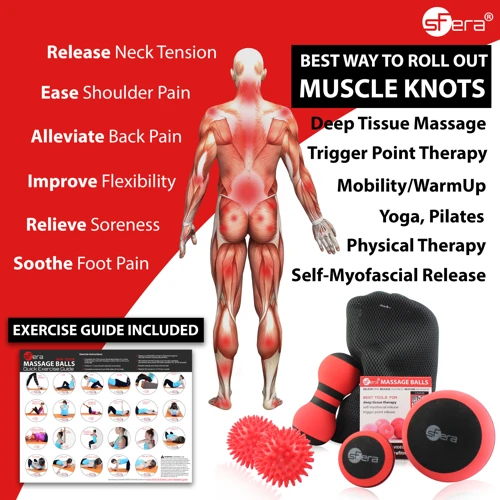
- Reduces Muscle Tension and Stress – Massage balls are designed to provide deep tissue massage, which can be used to reduce muscle tension and stress.
- Improves Range of Motion – By releasing trigger points in the body, a massage ball can help to improve range of motion, allowing you to move more freely and easily.
- Relieves Pain – The deep tissue massage provided by a massage ball can help to relieve pain and discomfort in the body.
- Targets Specific Areas – Due to its small size, a massage ball can easily target specific areas that may be hard to access with other massage tools.
- Improves Circulation – The massage action of the ball can help to improve circulation, which can help to reduce inflammation and improve overall wellbeing.
- Easy to Use – Massage balls are easy to use and require minimal effort to use effectively.
Using a massage ball is a great way to relieve muscle tension and stress, as it offers a range of benefits. Not only can it reduce muscle tension and stress, but it can also help to improve range of motion, relieve pain, target specific areas, and improve circulation. Furthermore, massage balls are easy to use and require minimal effort to use effectively.
Types of Massage Balls
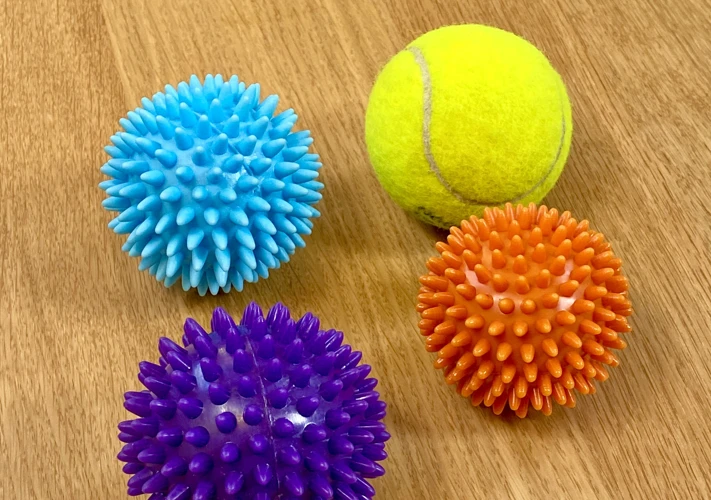
- Lacrosse Balls – These balls are usually firm and provide deep and intense pressure. They are perfect for working out knots in muscles and targeting small areas.
- Golf Balls – They are slightly less firm than lacrosse balls and are great for using on your abdomen, neck, and other sensitive areas.
- Spiky Massage Balls – These massage balls have spikes all over them which is great for stimulating circulation and breaking up scar tissue.
- Vibrating Massage Balls – These are great for relieving tension in your muscles and providing a soothing massage. They can also help reduce inflammation.
Using massage balls is a great way to relieve muscle tension and stress. Whether you use lacrosse balls, golf balls, spiky massage balls, or vibrating massage balls, they can all help to improve your muscle health and reduce stress levels. Massage balls can be used to target specific areas, such as the back, neck, and shoulders, to help release tight muscles and reduce tension. They can also be used to stimulate circulation and break up scar tissue. For a more soothing massage, you can use a vibrating massage ball to help reduce inflammation and relax the muscles. So, if you’re looking to reduce tension and stress, using a massage ball can help you do just that.
How to Use a Massage Ball
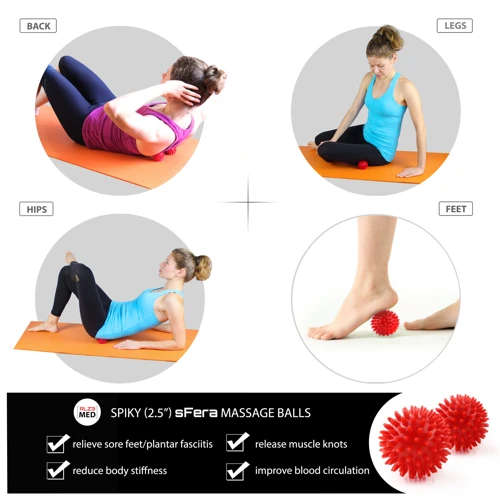
How to Use a Massage Roller Ball
A massage roller ball is a great way to relieve muscle tension and stress. It is a small ball-shaped device with a handle that can be used to massage your muscles. The ball is usually made of rubber or plastic and is designed to provide a gentle massage to the muscles. To use a massage roller ball, simply roll the ball over your muscles in a circular motion. This will help to relax the muscles and reduce tension and stress.
How to Use a Spiky Massage Ball
A spiky massage ball is a great tool for releasing tight muscles and relieving tension. It is a small ball-shaped device with spikes on the surface that can be used to massage your muscles. To use a spiky massage ball, start by rolling the ball over your muscles in a circular motion. This will help to loosen up the muscles and release tension. You can also use the spiky massage ball to massage specific areas, such as the back, neck, or shoulders.
1
To get the most out of your massage ball, it is important to use it correctly. Start by rolling the ball over your muscles in a slow, circular motion. Make sure to apply enough pressure to the muscles so that you can feel the massage ball’s spikes. Continue rolling the ball over the muscles until you have massaged the entire area.
2
For maximum benefit, use a spiky massage ball on your back. Start by lying on your back and placing the massage ball between your shoulder blades. Begin rolling the ball in a circular motion and slowly move it up and down your back. This will help to loosen up tight muscles and relieve tension. You can also use the massage ball on your neck and shoulders to release tension in those areas.
Keyword: How to use spiky massage ball on back
Massage Ball Techniques
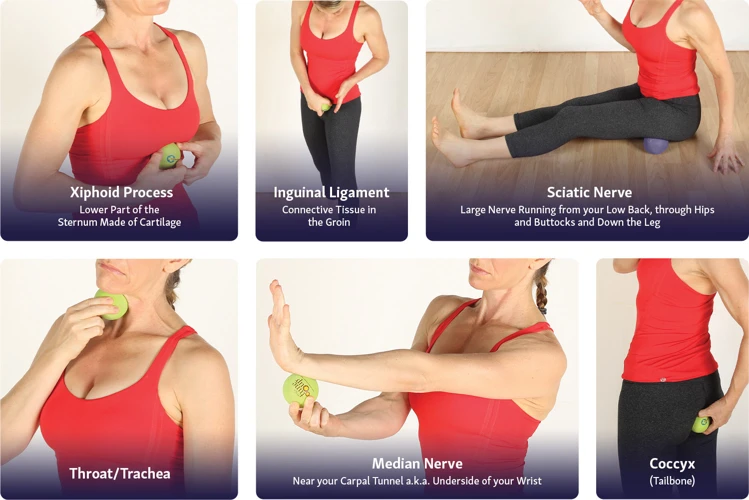
Spiky massage balls are an effective tool for relieving muscle tension and stress. They can be used to target specific areas of the body, as well as providing a general massage. Here are some massage ball techniques that can help reduce pain and discomfort in your muscles.
Myofascial Release
Myofascial release is a type of massage that helps to release tightness in the fascia (a connective tissue that surrounds muscles, bones and organs). To do this, place the massage ball on the area of your body that is tense and gently press down. Roll the ball around the area, making sure to keep the pressure consistent. You should feel a release in the muscle as the ball moves.
Trigger Point Therapy
Trigger Point Therapy is a type of massage that focuses on specific points in the muscle that are known as “trigger points”. Trigger points are areas of tension that can cause pain in other parts of the body. To do this, place the massage ball on the area of the body that is experiencing tension and gently press down. You should feel a release in the muscle as the ball moves.
Deep Tissue Massage
Deep tissue massage is a type of massage that targets the deeper layers of the muscle. To do this, place the massage ball on the area of your body that is tense and apply pressure. Move the ball in a circular motion for a few minutes. You should feel a release in the muscle as the ball moves.
Sports Massage
Sports massage is a type of massage that focuses on specific muscles that are used during physical activities. To do this, place the massage ball on the area of your body that is experiencing tension and apply pressure. Move the ball in a circular motion for a few minutes. You should feel a release in the muscle as the ball moves.
Shiatsu
Shiatsu is a type of massage that focuses on applying pressure to specific points on the body. To do this, place the massage ball on the area of your body that is experiencing tension and apply pressure. Move the ball in a circular motion for a few minutes. You should feel a release in the muscle as the ball moves.
Self Massage
Self massage is a type of massage that you can do on yourself. To do this, place the massage ball on the area of your body that is experiencing tension and apply pressure. Move the ball in a circular motion for a few minutes. You should feel a release in the muscle as the ball moves.
By using these massage ball techniques regularly, you can help reduce muscle tension and stress. Remember to take breaks and hydrate after using a massage ball to ensure that you get the best possible results.
Safety Considerations
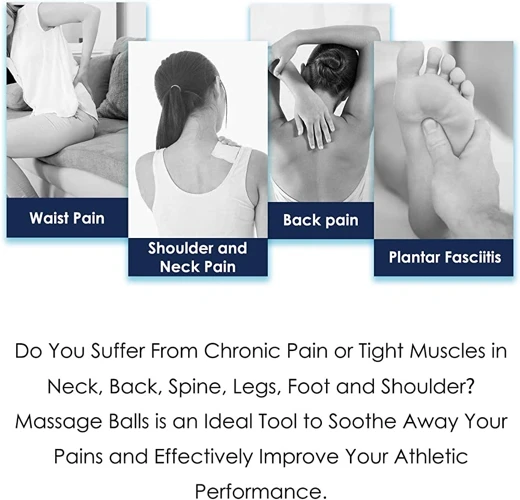
Before using a massage ball, it is important to understand the potential risks and take the necessary precautions.
Be mindful of the pressure applied. Massage balls can be strong tools, so it is important to be aware of the pressure being applied. Applying too much pressure can cause injury, so it is best to start off with only light pressure and increase it gradually.
Avoid any areas with bruises, cuts, or rashes. If any of these areas are present, it is best to avoid massaging them as this can cause further injury.
Pay attention to your body. If any pain or discomfort is experienced, it is best to stop the massage and seek medical advice.
Choose the right massage ball. Depending on the area of the body being massaged, a softer or firmer ball may be needed. For example, a softer massage ball is often recommended for massaging the neck and shoulders, while a firmer massage ball is better for massaging the lower back and feet.
How to use a spiky massage ball for the feet. Before using a spiky massage ball on the feet, make sure to cover it with a towel or cloth to reduce the intensity. Then, apply light pressure to the foot and roll the ball around, paying attention to any areas of discomfort. If the massage ball is too intense, reduce the pressure or use a softer massage ball.
Tips for Choosing the Right Massage Ball
| Factors | Factors to Consider |
|---|---|
| Material | The massage ball should be made of firm yet pliable material for maximum comfort and benefit. Common materials used for massage balls are rubber, foam, and textured plastic. |
| Size | The size of the massage ball should be determined by the size of the muscle group being massaged. Smaller massage balls are easier to use on smaller muscle groups such as the feet, while larger balls are better for larger muscle groups such as the back. |
| Texture | The texture of the massage ball should be determined by the desired intensity of the massage session. Smooth balls are better for a softer massage, while textured balls are better for deeper massage. |
| Price | The price of the massage ball should be considered when choosing the right one. High-quality massage balls are typically expensive, but they are worth the investment if you plan to use them on a regular basis. |
When choosing the right massage ball, it is important to consider the material, size, texture, and price of the ball. The massage ball should be made of firm yet pliable material for maximum comfort and benefit. The size of the ball should be determined by the size of the muscle group being massaged, and the texture should be determined by the desired intensity of the massage session. The price of the massage ball should also be considered, as high-quality massage balls are typically more expensive.
Frequently Asked Questions
What type of massage ball should I use?
There are a variety of massage balls available to target different areas of the body. The most common types of massage balls used to relieve muscle tension and stress are:
- Spikey massage balls: These massage balls have small spikes on them that can help to release tight muscles and increase circulation.
- Foam massage balls: These massage balls are softer and are great for massaging sensitive areas of the body.
- Therapy massage balls: These massage balls are larger and firmer than foam balls and are great for targeting larger and deeper muscle groups.
When choosing a massage ball, it is important to consider the size, firmness, and material of the ball. It is also important to take into account any medical conditions or areas of the body that require special attention.
How often should I use a massage ball?
It depends. The frequency of use of a massage ball depends on how often you experience muscle tension and stress. Generally, the more frequently you use a massage ball, the more effective it is in relieving muscle tension and stress. Here are some tips:
- If you have chronic pain and muscle tension, use the massage ball daily.
- If you just have occasional muscle tension and stress, use the massage ball once or twice a week.
- If you use the massage ball as part of a workout routine, use it after each workout.
- If you use the massage ball as part of a recovery routine, use it after each session.
It’s important to listen to your body. If the massage ball causes any discomfort, reduce the intensity of your massage or the frequency of use.
What are the Benefits of Using a Massage Ball?
- Reduce Muscle Tension: A massage ball can help reduce muscle tension in your body, allowing you to move more freely and with less pain.
- Improve Flexibility: Massage balls can be used to improve flexibility, helping you to move better and with greater range of motion.
- Relieve Stress: Massage balls can help reduce stress, leaving you feeling more relaxed and less tense.
- Reduce Pain: Massage balls can help reduce pain, allowing you to move more comfortably and with less discomfort.
- Improve Circulation: Massage balls can help improve circulation, allowing more oxygen and nutrients to be delivered to your muscles and tissues.
- Promote Relaxation: Massage balls can help promote relaxation, allowing you to more easily fall asleep and stay asleep.
Are There Any Precautions I Should Take When Using a Massage Ball?
Yes, there are several precautionary measures you should take when using a massage ball:
- Avoid applying too much pressure when rolling the massage ball over your body. Start slowly and increase the pressure gradually to prevent any discomfort.
- Be mindful of any areas of your body that may be more sensitive to pressure. Avoid rolling the massage ball over any areas that are inflamed, swollen, or bruised.
- If you experience any pain or discomfort during the massage, reduce the amount of pressure or stop the massage entirely.
- Always use a massage ball on a clean, dry surface. Do not use the massage ball in water and keep it away from any moisture.
- Check the massage ball for any signs of wear and tear before each use. If the ball is cracked or damaged, discontinue use and replace it with a new one.
Is it safe to use a massage ball on my lower back?
Yes, massage balls are safe to use on the lower back, provided they are used correctly. It is important to avoid any overly aggressive motions and to stop using the ball if any pain or discomfort is felt. Before use, it is prudent to check with a doctor or physiotherapist to ensure that the massage ball is suitable for the individual’s specific needs.
Conclusion
Massage balls can be a great tool to help relieve muscle tension and stress. They are easy to use, affordable and can be used at home or on the go. When used properly and safely, massage balls can help to improve flexibility, circulation and decrease overall tension and stress.

